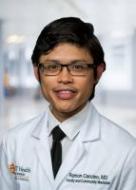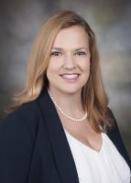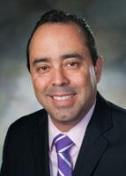|
Exercise over 60: Use it or lose it, but don’t abuse it
Exercise isn’t just for the youngest among us. As we age, the routine use of our bodies for exercise helps keep us out of pain, in peak spirits and, of course, healthier. Exercise becomes more critical as we cross the threshold from middle age to the golden years beyond.
When over 60, exercise is a way to maintain the structure and function of your muscles, bones and cartilage. It is no surprise that exercise is of major importance once you’ve had heart problems or find you have high blood pressure. For those of us who are overweight, we can’t escape the endless information cycle about the role obesity plays on diabetes, high blood pressure, heart attacks, stroke, sleeping and breathing problems, depression and generalized body pain. Exercise, combined with healthy eating habits, can curtail or even eliminate some of these problems. An active lifestyle isn’t just for burning calories. It also encourages proper bone growth and is the only way to feed our cartilage. Maps of the country that show areas where the population is less active also show more obesity. These areas also have more patients diagnosed with arthritis. It’s no wonder experts in the management of arthritis, such as the American College of Rheumatology and the American Academy of Orthopaedic Surgeons, recommend routine exercise to help manage the pain of arthritis. Aging can be unkind to our bodies. We lose 15 percent of our muscle mass every decade over 50, and 30 percent every decade over 70. The loss of this muscle in weight-bearing muscles can lead to increased falls. Osteoporosis (the loss of bone mass) is a common problem for women after menopause, but men also suffer as they age. Exercise is the main defense. Many with arthritis are afraid that exercise programs may damage their knees. It's just not true. Arthritis is when shock-absorbing cartilage on the end of the bones slowly wastes away. If you have seen the smooth white ball on the end of a chicken bone, then you’ve seen cartilage. The white color is because it has no blood supply, no veins or nerves. It is sustained through the fluid made in joints by the synovial lining tissue. When you step on your leg, the white tissue squeezes together. You press out the fluid like squishing a sponge. This synovial fluid supports the cartilage and carries the wastes of the cells to the tiny blood vessels in the joint lining. When you step off the leg, healthy cartilage springs apart to absorb the fluid of the joint and carry nutrients and oxygen into the tissue to feed the cells of cartilage (called chondrocytes). Exercise is how you keep the cartilage tissue in a healthy state. Studies show that exercise improves both pain and function in patients who suffer from arthritis of the knees. Following a healthy and balanced diet helped even more. Like dieting, exercise cannot be done all at once. Aggressive and strict starvation diets don’t work well because your body needs a certain amount of calories to maintain proper function. Trying to jump into exercise routines that are overly demanding or too high impact can cause damage to your muscles, tendons, bones and cartilage—just what you are trying to avoid. Like saving money for retirement or watering your garden, exercise is best done a little at a time, but over the longest periods of your life. This means building strong muscles and bones without tearing your tendons or causing stress fractures. Exercising often and picking a low enough level of activity where you can maintain the routine is the best way to build bone and maintain both cartilage health and cardiac health. As we age, our bodies heal more slowly. The pain we sometimes get after exercise that gets better quickly is known as delayed muscle soreness and is a normal part of healing. If the pain lasts for many days or doesn't improve with rest, it may represent an overuse injury. Athletes of all ages can get stress fractures that, if ignored, can lead to permanent problems. It is especially critical for people over age 60 to listen to their bodies after exercise and identify pains that don’t go away after a period of rest—they may signal a serious injury. This is a good time to see your physician. Overuse injuries are very common among people over 60 beginning new exercise routines or rapidly increasing the intensity of their activities. Every January, doctors see an uptick in the number of patients as a result of people beginning exercise regimens after long periods of inactivity during the holidays. To get the best results from your exercise routine, start slow build up to 30 to 40 minutes every day. Consider walking, biking, swimming and the elliptical—all low-impact activities. Marc DeHart, M.D., is a board certified, fellowship-trained orthopaedic surgeon with UT Health Physicians. He specializes in adult hip and knee reconstructive surgery and treats patients with arthritis.
For an appointment or more information about Dr. DeHart and the rest of the orthopaedic team, please call 210-450-9300.
Click here to read more about exercise and bone health on our website.
 |
|
 |  |
|
Free Women's Health Conference @ The Witte Museum
Twelve women’s health experts from UT Health San Antonio will host intimate roundtable discussions about the latest discoveries and trends in total women’s health. Admission to the conference is free and includes admission to the newly renovated Witte Museum. Register today!
RSVP to Attend the 3rd Annual Women’s Comprehensive Health Conference – Saturday, Nov. 18, at the Witte Museum.
Be the first to learn about new, proven methods for enhancing your physical, mental and emotional well-being, now and for a lifetime.
Twelve women’s health experts from UT Health San Antonio will host intimate roundtable discussions about the latest discoveries and trends in total women’s health. Admission to the conference is free and includes admission to the newly renovated Witte Museum. Register today!
Arrive early to receive your free gift bag filled with products and services from more than 30 health and wellness vendors. Enjoy:
- Continental breakfast and coffee bar
- Complementary health assessments and screenings
- Admission to the newly transformed Witte Museum
- Onsite mobile mammography
- Exciting door prizes
This year’s event will be emceed by News 4 WOAI meteorologist, Siobhain Anders.
Click here to learn more and RSVP.
High-tech and low profile: The latest in hearing aids
What is 1.25 inches long, has wireless streaming capabilities and enhances your ability to hear? No, I’m not describing the latest trend in wireless headphones; I’m describing a hearing aid. The hearing aid industry has made remarkable improvements to the cosmetics, functionality and efficiency of hearing aids.
Surprised? When you thought about a hearing aid, did you imagine a bulky device resembling a small beige banana? Fortunately for hearing aid users, that is no longer the case. Advances in hearing aid technology have made these devices smaller and smarter with more superior sound quality than ever before. Additionally, many hearing aids have the ability to connect users to our wireless world—a technology far beyond the traditional hearing aid experience.
In addition to streaming audio or media, Bluetooth technology has the ability to transform your smart device into a sophisticated hearing aid remote control. Some apps allow the user to adjust not only the volume, but also aspects of base, treble and the focus of soundwaves through the microphones.
Worried that it is far too easy to lose such a small device? GPS technology within the device and app provide the user with the last known GPS coordinates of the device. Lost your hearing aids in the house? Many devices have a feature that turns your smart device into a sophisticated game of “Hot and Cold” with a visual indicator that lights up the closer the user is to the lost device.
These are just a few of the amazing advancements in hearing aid technology, not to mention their sophisticated, sound-enhancing qualities. UT Health Audiology provides diagnostic testing to determine if patients are candidates for hearing aids. Audiologists can perfectly match qualified patients with hearing aids that meet their needs and their lifestyles.
If you answer “yes” to any of the following questions, you should consider having your hearing tested:
- Do you hear that people are talking, but frequently have trouble understanding what’s being said?
- Do you struggle to hear the television or telephone conversations clearly?
- Do others accuse you of ignoring them, when in fact you didn’t actually hear them?
- Do you find yourself just nodding “yes” in group settings because you find it hard to understand the conversation?
- Are you smartphone savvy and think you would enjoy manipulating your hearing aids using an app?
- Would you like to stream your cell phone conversations wirelessly to both ears?
If you answered “yes” to any of these questions, call 210-450-9950 to make your appointment with an UT Health audiologist.
 |  |
Hill Country Primary Care: Now accepting new patients
The Primary Care practice at UT Health Hill Country provides comprehensive health care for children, adults, and seniors in the Boerne / Leon Springs area, conveniently located just off Intersate10 at the Ralph Fair Road exit.
Having a primary care provider is essential to your health and well-being. All of our board-certified primary care providers are trained to prevent and treat a wide variety of medical conditions for patients of all ages, from newborns to older adults.
We are a NCQA-rated Patient-Centered Medical Home which is more assurance that you have made the right decision by choosing UT Health Hill Country. With a commitment to promoting lifelong health, we care for our patients in a manner that is respectful of their time, beliefs and values.
Our primary care physicians help individuals and families stay healthy with a personalized plan of care — a tailored plan each patient can follow for achieving their optimal health. We know the key to maintaining long-term health is a strong and honest patient-physician relationship.
Our Hill Country office also features other medical specialties including orthopaedics, urology, a physical therapy center and a complete imaging center
Make an appointment today at 210-450-6800.
Meet the Primary Care providers of UT Health Hill Country:

Paris Brinkley, M.D.

Ramon Cancino, M.D.

Phyllis MacGilvray, M.D.
 |
|
 |  |
|
MyChart: prescription refills
Did you know you can request prescription refills with our new MyChart app? Or just log into the MyChart website to request a refill. Click below to read more about MyChart and all the features available to you including prescription refill requests.
What is PSA?
September is prostate cancer awareness month. PSA stands for Prostate Specific Antigen, which is a protein made by the prostate gland. Click the "Read More" button to learn more about PSA, or to make an appointment with UT Health Urology in the medical center or our new Hill Country office, call 210-450-9600.
National Atrial Fibrillation Awareness Month
Atrial fibrillation (also known as afib) is the most common heart rhythm disorder, affecting around 6 million people in the United States. It can cause your heart to flutter or race. A UT Health Physician's heart specialist explains the symptoms, risk factors for afib as well as the innovative treatments and research happening at UT Health.
A serious consequence of atrial fibrillation is stroke, which is five times more likely in patients with afib.
Afib can be caused by high blood pressure, obesity, sleep apnea, heart disease, stress and excess caffeine or alcohol intake. Some people feel poorly when they are experiencing atrial fibrillation, while others may not feel any differently at all. Likewise, some people experience afib for just short periods of time, while others are always in a state of afib. The prevalence of this disease is increasing in epidemic proportions. Thankfully, available treatment options are also growing. UT Health Physicians offers patients the complete spectrum of atrial fibrillation care. Treating Afib The electrophysiology team at UT Health Physicians is dedicated to making our practice a site of excellence in treating atrial fibrillation and preventing the adverse effects of the disease. Some patients with atrial fibrillation may be treated using a “rate control approach”, where afib is maintained while the heart rate is controlled. This is achieved using medication or through a minimally invasive technique, coined “ablate and pace,” which involves ablation of the atrioventricular (AV) node and implantation of a pacemaker. For many of these patients, an external monitor or a small implantable monitor is used to regularly assess the heart’s rhythm and rate over a prolonged period of time. Other patients may be candidates for a “rhythm control approach” in which a normal heart rhythm is maintained using external cardioversion. Additionally, different medicines, including beta-blockers and anti-arrhythmic medications, are used to help maintain a normal heart rhythm. Patients who experience negative symptoms due to their atrial fibrillation may be candidates for surgical treatments. The electrophysiology program at UT Health Physicians offers advanced surgical procedures for treating atrial fibrillation. Some of our patients are currently participating in the aMAZE trial to study a two-stage procedure for treating patients with atrial fibrillation. Patients who participate in this trial undergo minimally invasive surgery for a suture ligation of the left atrial appendage and subsequently undergo a catheter ablation procedure to isolate the pulmonary veins. Catheter ablation is a minimally invasive surgical procedure in which 3-D mapping of the heart is performed and the pulmonary veins are electrically isolated using either radiofrequency energy or a cryoablation balloon.
For patients with more long-standing, persistent afib, a treatment called hybrid ablation may be considered. This treatment involves minimally invasive surgery followed by a catheter ablation to achieve higher success rates in suppressing afib. UT Health Physicians is dedicated to discovering and offering our patients the most advanced care for atrial fibrillation. Reducing the Risk of Stroke in Patients with Afib The physicians at UT Health insist that all patients with atrial fibrillation undergo a stroke risk assessment. Many patients are candidates for taking oral blood thinner medication to help decrease their risk of having a stroke. There are many options for blood thinners, but the decision about taking blood thinners should be made between the patient and their doctor with consideration given to the bleeding risks and other factors. For many patients, the stroke risk and bleeding risk may both be high. In cases where a blood thinner cannot be used long-term, UT Health offers patients a minimally-invasive procedure called WATCHMAN™. During this procedure, a device is implanted to close the left atrial appendage to prevent clots from forming in that area of the heart. If the procedure is successful, patients can ultimately be taken off of their oral blood thinners. UT Health Physicians offers excellent care for atrial fibrillation, including: - Recognition as the only center in the region participating in the aMAZE trial for persistent afib
- Establishing the first program to perform left atrial appendage suture ligation in the region
- Expertise in both radiofrequency catheter ablation and cryoablation for afib
- Regional expertise in the use of novel oral anticoagulants
- A hybrid surgical and catheter ablation program
- An established, multidisciplinary team implanting left atrial appendage closure devices
This article was written by Manoj M. Panday, M.D., a board certified clinical cardiac electrophysiologist. Dr. Panday has led the cardiac electrophysiology program at UT Health Physicians for over 10 years. He specializes in non-invasive and invasive treatment of patients with heart rhythm disorders.
If you or someone you know has afib and is interested in treatment options, call UT Health San Antonio at 210-450-4888.
 |  |
Meet our providers
Get to know the providers of UT Health Physicians and UT Dentistry; compassionate experts here to serve you.
Meet our new providers at UT Health Physicians:
Mark Poirier, D.O.
Nephrology
John Seaworth, M.D.
Cardiology Amanda Stetler, D.O.
Obstetrics and Gynecology
UT Dentistry is the dental practice of UT Health San Antonio, located at 8210 Floyd Curl Drive, just next door to UT Health Physicians' Medical Arts & Research Center (MARC).
Below are three of more than 80 expert dentists here to serve you.

Maria Jose Cervantes Mendez, D.D.S., M.S. Pediatric Dentistry

Nikita Ruparel, D.D.S., M.S., Ph.D. Specialized Dentistry: Endodontics
 Luis C. Yepes, D.D.S. General Dentistry
Call UT Dentistry at 210-450-3700 for an appointment today.
|
 |  |
|
New: Cranial remolding for infants
About 20 percent of children develop some kind of head shape abnormality during infancy. Often, these head shape abnormalities are attributed to conditions such as craniosynostosis and plagiocephaly.
Craniosynostosis is a birth defect in which one or more of the sutures between the bones of an infant’s skull close too early. This causes an abnormally shaped skull and often requires surgery.
Plagiocephaly is characterized by the formation of a flat spot on an infant’s head. This can occur while a baby is inside the womb or after birth. Tummy time exercises can help limit the development these flat areas for many babies.
Download UT Health’s Beginner’s Guide to Tummy Time brochure.
The Cranial Remolding Program at UT Health Physicians specializes in the expert evaluation and treatment of infant head shape abnormalities. In less than two seconds, our advanced, FDA-approved, eye-safe laser allows us to safely and painlessly scan an infant’s head. The detailed images and data it produces helps our team determine the best approach to treatment. These scans are also used to document changes in the shape of an infant’s head over the course of their specific treatment plan.
For patients with plagiocephaly, a STARband® Cranial Remolding Orthoses is worn 23 hours a day for an average of three to five months (depending on their age and the severity of their condition). For patients with craniosynostosis, a treatment plan will likely require them to wear a post-operative Cranial remolding orthoses following their surgery.
The exact parameters of the treatment plan will be dependent on the infant’s needs as well as the severity of their condition. If you are concerned about the shape of your baby’s head, talk to your pediatrician about scheduling a complementary evaluation by the UT Health Cranial Remolding Program, or call 210-450-9064.
We love hearing from our patients! Read some of the success stories about the babies and their families who have benefitted from our program.
September is Craniosynostosis Awareness Month. UT Health has led the innovation and advancement of minimally invasive craniosynostosis treatment, and now is the time to help spread awareness about this serious, but treatable condition. All families affected by craniosynostosis are encouraged to share their story on UT Health's Craniosynostosis Facebook page.
 |  |
Research update: how does exercise help?
UT Health San Antonio and the UT Medical Branch at Galveston are working together to study how exercise changes the body at the molecular level. The team is looking for volunteers who are 18 years and older. If you’re interested, call 210-450-0020.
|
|
|